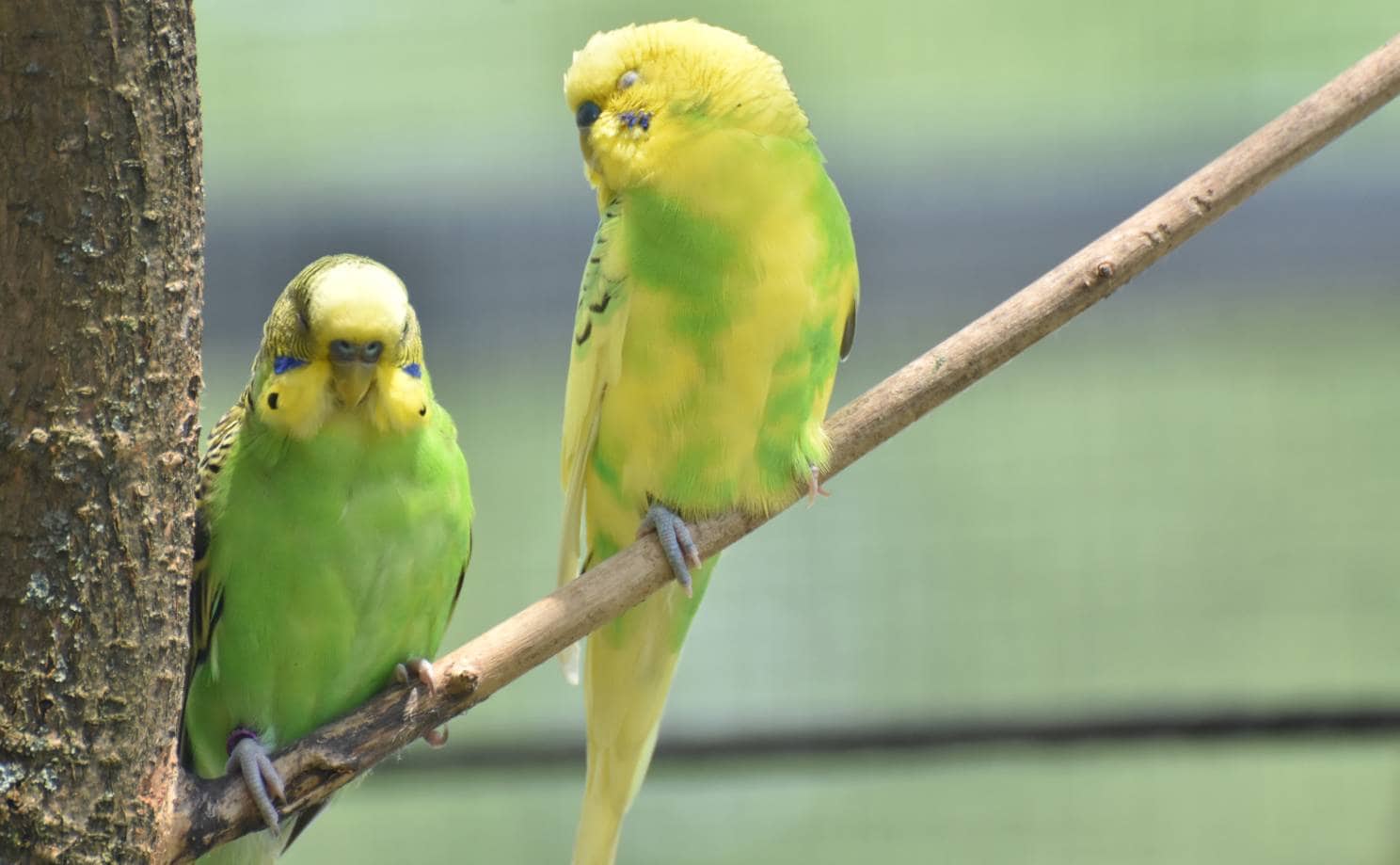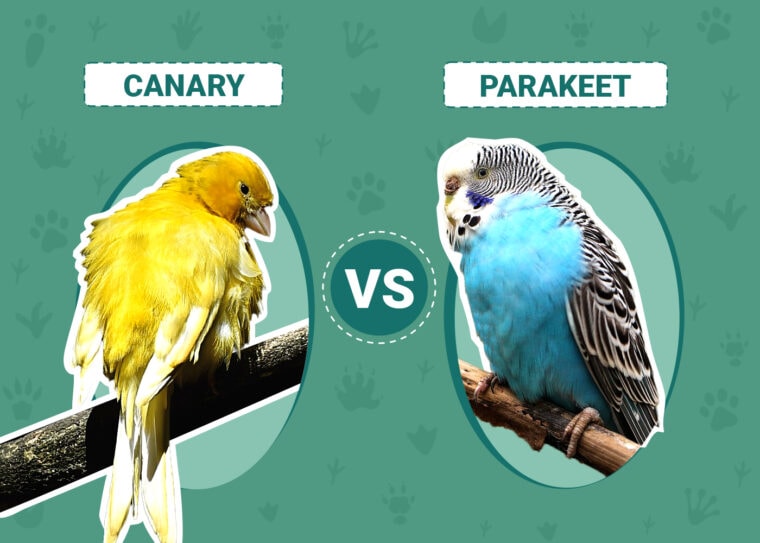
Click to Skip Ahead
Canaries and parakeets are playful and colorful birds that make great pets for first-time bird owners. Neither will take up much space in your home as they’re small and don’t require a large cage. However, aside from their size and a few similar personality traits, canaries and parakeets are completely different pets. Not only are they different taxonomically (parakeets are parrots and canaries are finches), but their needs are very contrasting. If you’re trying to decide which would make a better pet for you, we can help.
Keep reading to learn more about the differences between these two species so you can choose the perfect one to fit into your family dynamic and lifestyle.
Visual Differences
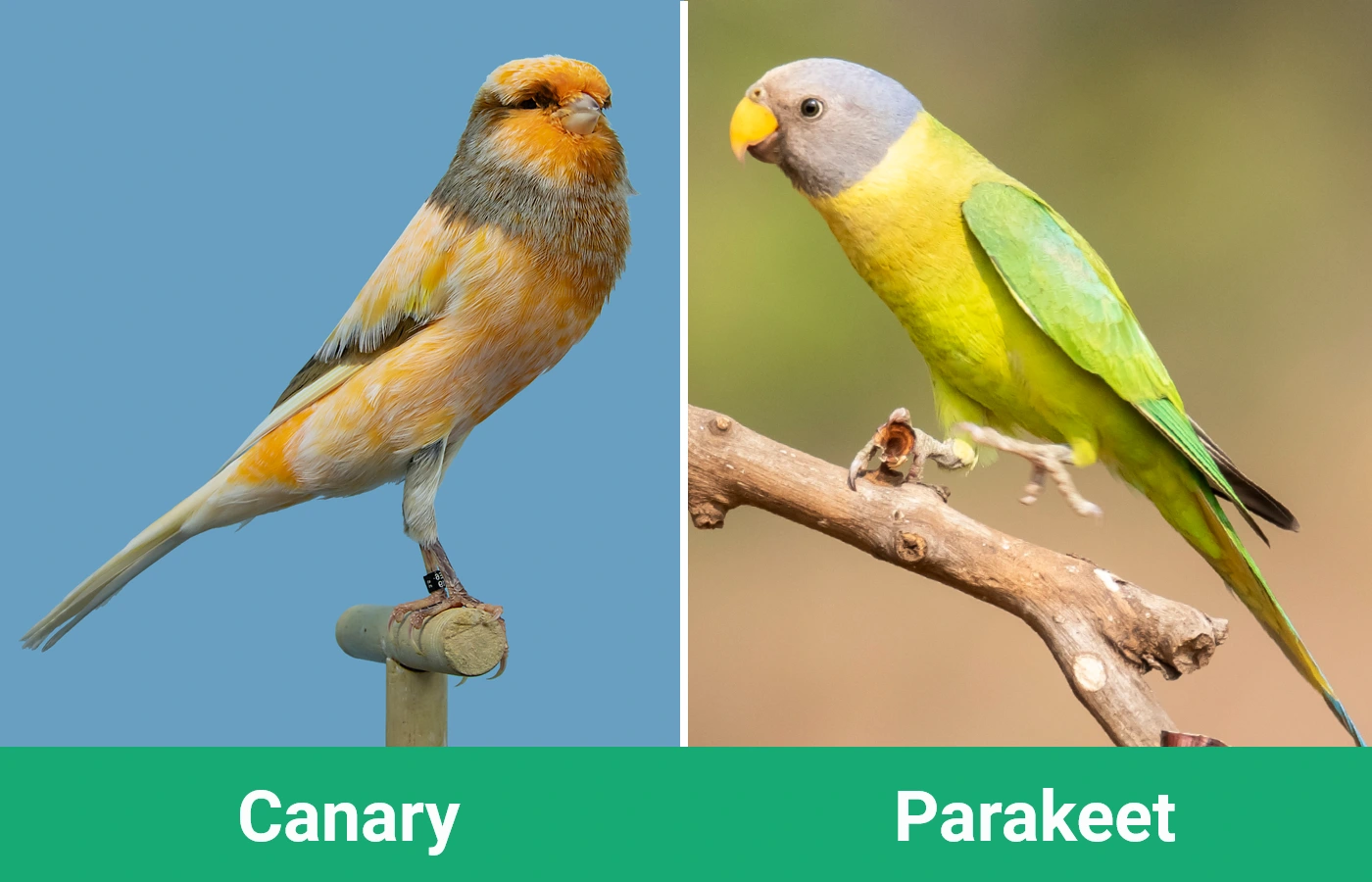
At a Glance
Canary Overview
Canaries are a type of finch native to the Canary Islands, a Spanish archipelago in the Atlantic Ocean off the coast of northwestern Africa. There are more than 200 breeds of canaries that all vary in appearance, song, and coloration.
Canaries played an essential part in the coal mining industry in the UK, Canada, and the USA in the 1800s and early 1900s. Their sensitive respiratory systems made them useful as toxic gas detectors. They would sometimes be kept in carriers with oxygen bottles attached to revive them if the gases put them in respiratory distress. The phrase “canary in a coal mine” came from the practice of using these birds in the coal mine. The term refers to a person or thing serving as an early warning of a foreboding crisis.
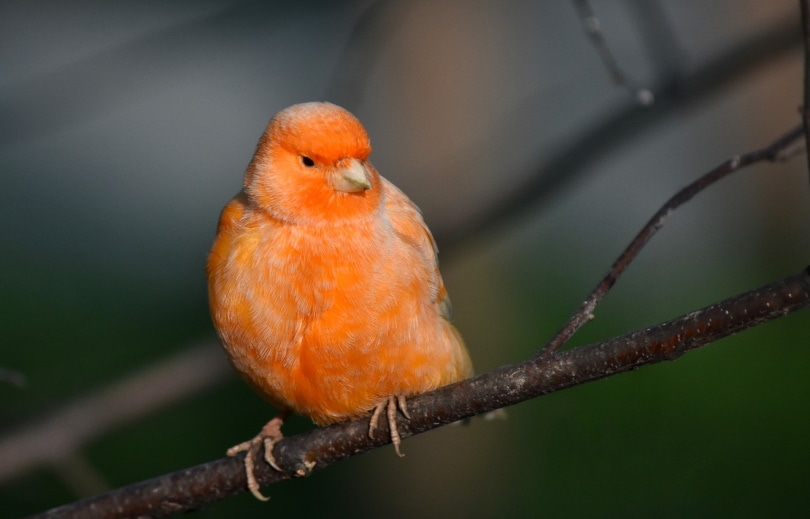
Personality
Canaries like being around people but aren’t fond of excessive handling like other similar bird species. Though charming, most canaries err on the timid and shy side. This is a relatively independent and solitary bird as it does not need to be housed in pairs to live a happy and healthy life. Canaries can also live in an aviary environment with other similarly-sized birds, but they can be territorial, so always watch out for dominant or aggressive behavior.
Types
Training
Canaries are intelligent birds that can be trained to sit on their owner’s hands, move to perches, or fly in a specific pattern. Of course, the earlier you begin training, the better, as younger birds are more receptive than their older counterparts. But with time and patience, almost any canary can be tamed and trained.
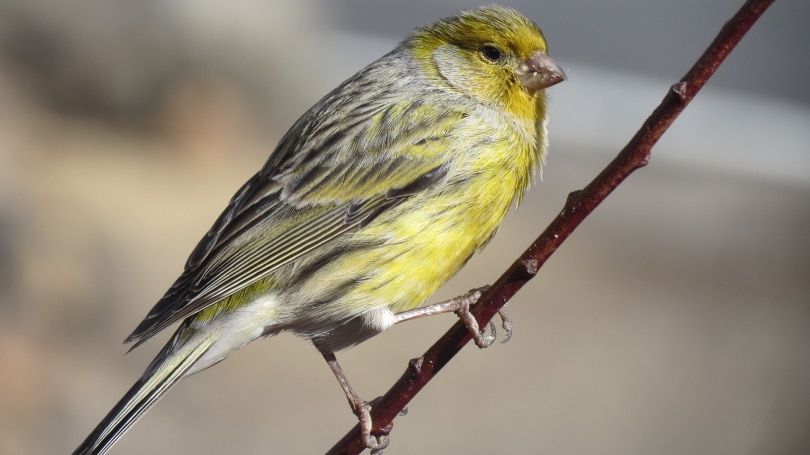
Suitable For:
Canaries are the perfect feathered friend for people who want to keep birds but aren’t necessarily fond of excessive handling. They don’t need much attention and can be great for beginner bird owners. However, their small stature and fragility may not make them the best species for homes with small children.
Parakeet Overview
Parakeets, or budgies, are one of the smallest parrot species. The term “parakeet” refers to any long-tailed parrot. They are native to Australia and live in grasslands in large flocks. The wild budgie is like the ones in pet stores, though it is smaller and typically only found in green colorations.
John Gould, a naturalist, and his brother-in-law brought budgies to Europe in the 1830s. The Europeans became enamored with the bird, and it quickly became a staple pet in the wealthier homes of the time. Australia banned the exportation of these birds in 1894, so the Europeans had to breed their existing stock to continue expanding the species. The parakeet made its way to America in the 1920s but didn’t become popular until the 1950s. Today, parakeets are one of the most popular pet birds in the world.
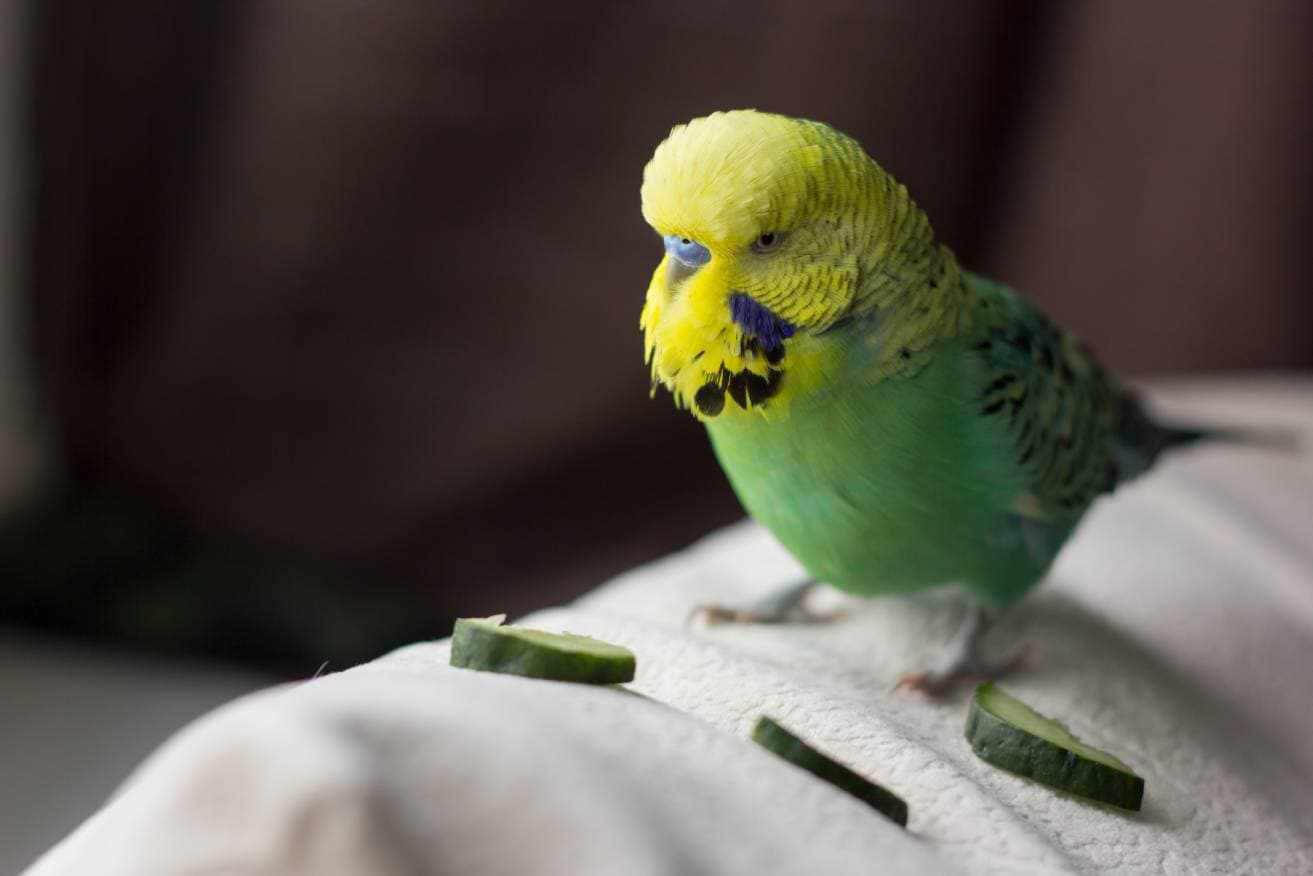
Personality
Parakeets are gentle and docile birds. Like most parrots, they are loving and playful pets and can learn to mimic sounds and speak. Unlike most species of parrots, parakeets are quiet and well-suited to apartment life.
They’re very social and don’t fare well in isolation, so they need plenty of social interaction to stay happy and healthy. You can house two parakeets together, though they may not bond well with you or learn to speak as quickly if paired up.
Types
Parakeets are small to medium-sized parrots that comprise around 115 species of birds. However, there is no standard definition for a parakeet as the taxonomic group. Generally speaking, birds that fall into the parakeet category have hookbills and long tails and are smaller than other larger parrots like macaws or cockatoos.
Budgies or budgerigars are parakeets. There are two names for the same bird because they’re called different names in different countries. So you’ll find parakeets in the United States and budgerigars in Australia, but they’re all the same bird.
To further the confusion, all conures are part of the larger parakeet group, but not all parakeets belong to the Conurus group that conures belong to.
Training
Parakeets are easy to train, especially if you begin training at a young age. They are intelligent and responsive to training and have great problem-solving skills thanks to their natural curiosity. Parakeets can be taught to perform tricks like fetch and skateboarding. In addition, since they’re one of the most vocal birds in the parrot family, they can often be taught to sing songs and talk. Some parakeets have vocabularies consisting of hundreds of words.
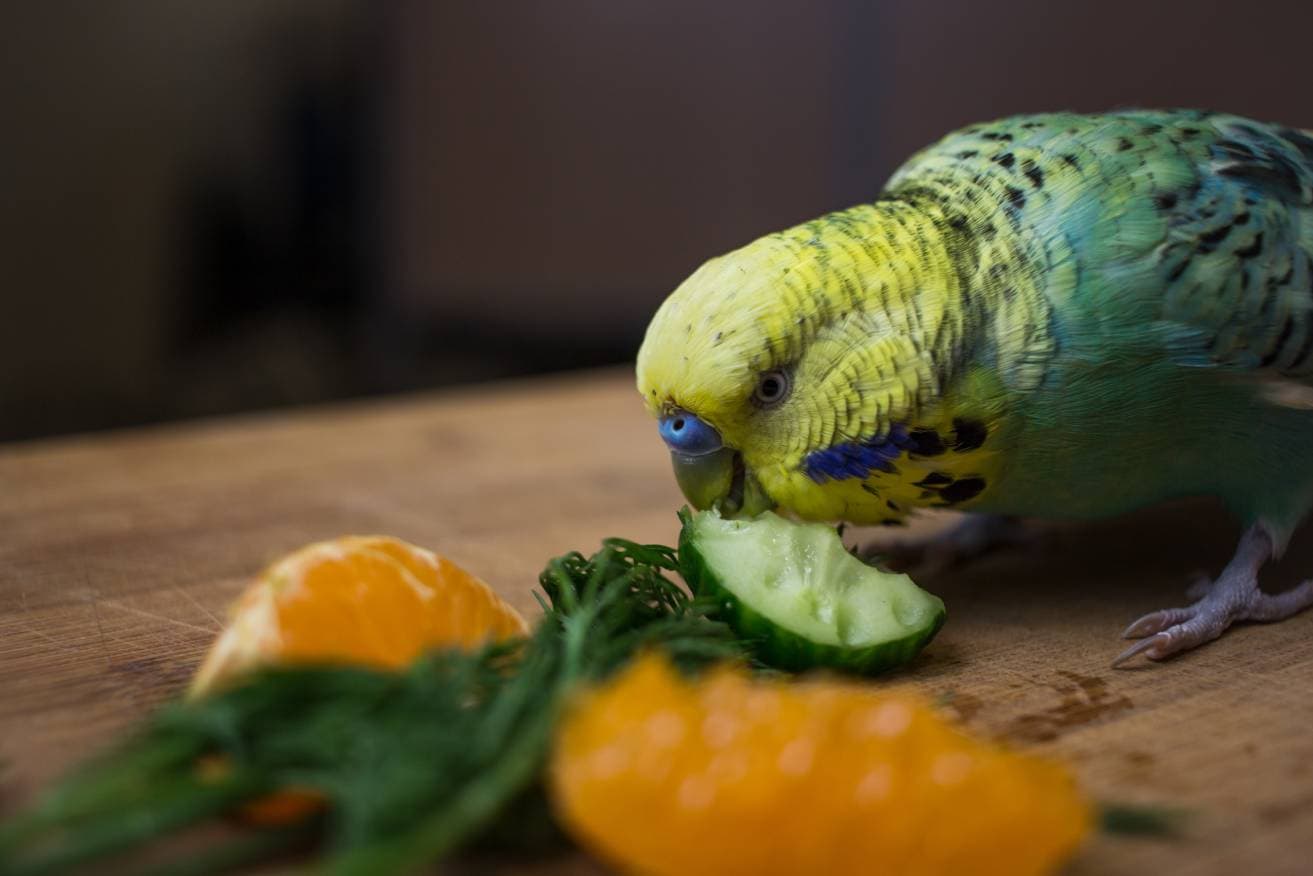
Suitable For:
Parakeets make fantastic pets for families who want the friendliness and socialness of a parrot in a smaller and quieter package. Parakeets need smaller cages than their larger parrot counterparts, making them an excellent option for people living in smaller homes or apartments. In addition, they are excellent pets for children and beginner bird owners.
Which Breed Is Right for You?
Canaries and parakeets are both colorful and small birds, but that is where their similarities end.
Canaries are sweet birds with a quiet, playful streak, but they are often shy loners and aren’t particularly fond of snuggling their owners. Parakeets, on the other hand, are loving and social birds that do best in more hands-on environments.
Since parakeets are part of the parrot family, they have many characteristics of the traditional parrot. They can talk and come in a wide variety of colors. Canaries are songbirds, so one will fill your home with beautiful songs, especially if yours is male.
If you’re searching for a hands-off bird and don’t have young children in your home, a canary might fit in well with your family. Canaries don’t mind being left alone and don’t need much time outside the cage. They don’t require much social interaction from you, but their fragility makes them not a great pick for homes with young kids.
If you like the idea of owning a parrot for how well they bond with humans but don’t have the space in your home for a larger parrot, a parakeet might fit in excellently! They love to interact with humans and are known for their friendliness.
Featured Image Credit: Top – Canary (Fernando Zamora Vega, Shutterstock) | Bottom – Parakeet (AlecTrusler2015, Shutterstock)




